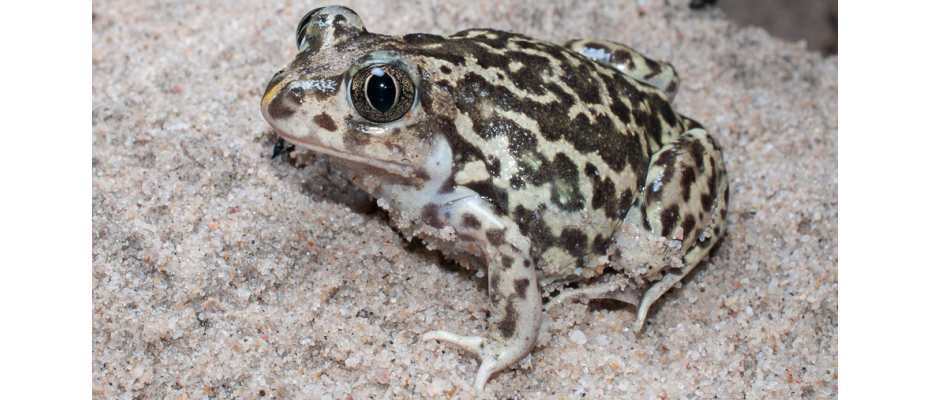
Sevilla, 1 June 2022.- A scientific group led by the Doñana Biological Station – CSIC has sequenced, assembled, and annotated the genome of the Western Spadefoot toad (Pelobates cultripes) at high resolution. This amphibian inhabits mainly the Iberian Peninsula, reaching parts of southwestern France and has become a research model for ecology in the last ten years due to its great ability to respond to environmental challenges. The Centro Nacional de Análisis Genómico (CNAG-CRG) and the Barcelona Supercomputing Center (BSC-CNS) have collaborated in this work.
Amphibians, the most threatened group of vertebrates on the planet, play a fundamental role in ecosystems and serve as a connection between aquatic systems and the terrestrial environment that surrounds them. However, they have large and complex genomes and the number of sequenced genomes at the chromosome level is low: only 12 amphibian species genomes have been sequenced -according to the National Center for Biotechnology Information- which represents less than 0.5% of all amphibians. This fact contrasts with other major groups of vertebrates such as birds, with more than 520 species with reference genomes (around 5% of described species), or mammals, with more than 460 species, which represents around 7%. of all mammals described.
“Amphibians are a perfect study group for genomic studies”, says Ivan Gomez-Mestre, a researcher at the Doñana Biological Station – CSIC. “They represent ancient lineages of vertebrates that have managed to occupy most of the world’s regions and they have diversified morphologically, evolved a vast array of reproductive modes and showed great divergences in size and structure of their genomes”.
The Western Spadefoot toad is, in addition, an interesting study species to understand how organisms can respond to global change due to its incredible capacity to respond to environmental changes by adjusting its behavior, morphology, and physiology. For instance, the same research group found that this species can accelerate its development by 30% when they perceive a risk of desiccation from pond drying, which is becoming more and more common given that global change results in less precipitation and shorter periods of flooding for the temporary lagoons where this species inhabits.
“The genome sequencing of this species will help us to understand the genetic structure of natural populations, how environmental variation induce changes in gene expression levels or how the size of genomes is related to its complexity”, concludes Christoph Liedtke, a researcher at the Doñana Biological Station – CSIC.
The CNAG-CRG sequenced the spadefoot toad sample with both long read (Oxford Nanopore Technologies) and short read (Illumina) technologies after which Fernando Cruz performed the genome assembly. Additional scaffolding of the assembly into chromosomes was achieved using Dovetail Genomics Chicago and Hi-C technologies. Finally, Jèssica Gómez-Garrido annotated the genome with the help of transcriptomic data previously produced at the CNAG-CRG. The sequencing and bioinformatics work were supervised by Marta Gut and Tyler Alioto, respectively.
Work of reference
Chromosome-level assembly, annotation and phylome of Pelobates cultripes, the Western Spadefoot toad











